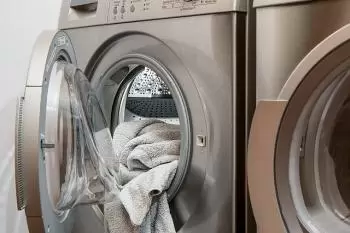
Since the appearance of electricity, its use has grown exponentially.
In its beginnings, the use of electrical energy was relegated to industry and lighting. However, little by little a large number of electrical elements have appeared that have completely changed our lives.
Here are some examples of electrical energy:
1. Light energy
Electric energy is used to generate light.
The first to invent the light bulb was Thomas Alba Edison. Eddison discovered that when an electric current circulated through a resistor, the Joule effect it produced could generate light.
Little by little this technology has changed and led lights have appeared. However, in all cases, they work with an electrical power source.
2. Electric motors
Electric motors are machines that transform electrical energy into mechanical energy. They normally provide this energy in the form of kinetic energy by rotating a shaft.
Electric motors added to the electricity supply in homes has been a revolution in people's quality of life. Some examples of devices that use electric motors that we can find at home are:
-
Washing machine.
-
Electric screwdriver.
-
Dishwasher.
-
Crusher.
-
Kitchen extractor.
-
Water Pump.
3. Electrical storms
Electrical storms are a type of electrical energy that produces electrical discharges naturally.
These discharges can be discerned as a flash of light, a bolt of lightning, followed by a high-pitched or dull rumbling sound, a thunderclap.
Thunderstorms are clouds in which a potential difference is created by separating charges.
4. Power plants
Power plants are facilities intended to generate electricity. There are many types of power plants with the capacity to generate electrical energy, such as:
-
Thermoelectric plants: these types of plants use sources of thermal energy to produce electricity. The most common are combined cycle power plants, which use fossil fuels, and nuclear power plants that take advantage of the energy from the nuclear reactions of Uranium atoms.
-
Photovoltaic installations: these types of installations take advantage of a property of certain materials such as Silicon to release electrons from solar radiation. Photons of light from the Sun impact on solar panels causing electrons to detach from the atoms that compose them. The sum of these electrons generate a continuous electric current.
-
Other renewable energy installations: in addition to solar energy, there are many other sources of energy that allow generating electricity in a sustainable way, such as wind energy, hydraulic energy or geothermal energy.
Grid-connected power plants use current transformers to supply energy in the form of alternating current. This energy has the advantage that it can be transported through power lines.
5. Electromagnets
The electromagnet is an electrotechnical element formed by a core of ferromagnetic material (usually soft iron) on which a coil of many turns of electrical wire is wound.
The purpose of the electromagnet is to generate a magnetic field from an electric current. As soon as the current is removed, the iron loses its magnet status.
The electromagnet often looks like a horseshoe and has conductive wires wrapped around it like a mat. When current passes through this mat, the iron core becomes magnetized.
6. Heat generators
When a current passes through an electrical conductor it generates heat as established by Joule's law. In general, this would be a disadvantage of electrical energy, but on the other hand, it allows us to generate heat.
Some examples where this effect is used to generate heat are:
-
Electric stoves.
-
Toasters.
-
Water heaters.
-
Heat pumps.
7. Air conditioners and refrigerators
Air conditioners and refrigerators are a particular case of heat generators.
The operating system follows the following steps:
-
Compress the air to be cooled. As the pressure rises, the temperature rises.
-
Circulate compressed air through a heat exchanger together with air at room temperature. Due to the first and second laws of thermodynamics, heat from compressed air is transferred to air at room temperature.
-
The air is decompressed and, as the pressure decreases, the temperature decreases, so we have air at a temperature lower than that of the environment.
8. Electrochemistry
Electrochemistry is a branch of chemistry that deals with processes that involve the transfer of electrons through an external electrical circuit and not by direct exchange as occurs with oxidation-reduction reactions.
It is, therefore, the chemical transformations produced by the passage of electricity in certain chemical systems and the production and storage of electricity through chemical transformations.
An example of electrochemical processes are those that occur when a battery is charged and discharged.
9. Electronic circuits
The electronic circuits that surround us are examples through which electrical energy circulates. Electric current constantly circulates through these circuits interacting with their elements, transmitting impulses and signals.
Some examples of electronic circuits are:
-
Computers
-
Phones.
-
Televisions
-
Digital watches.
-
Solenoid valves.